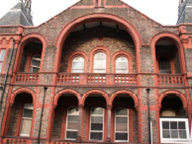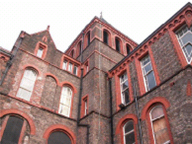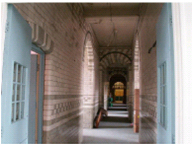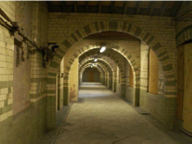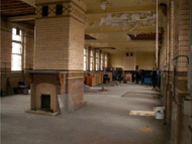Personalised medicine
Thanks to the funding from the Wolfson Foundation for the refurbishment of the Old Royal Infirmary, which is now home to the new Centre for Personalised Medicine, Department of Pharmacology and Therapeutics. The department moved in to the new building in November 2009.
The Old Royal Infirmary
The Grade II listed third Liverpool Infirmary was constructed between 1887 and 1889, to the designs of the Victorian architect, Sir Alfred Waterhouse, Liverpool born, was responsible for many famous buildings across the country including local examples such as Manchester Town Hall, the former North Western Hotel on Lime Street, Allerton Priory and the Prudential Insurance Buildings on Dale Street. Over his lifetime Waterhouse designed all the Prudential Assurance Buildings in the country. In London, the Natural History Museum is among many of his nationally famous buildings.
Waterhouse also designed the University’s iconic Victoria Building, which has undergone a £7.5m restoration and is now home to the University’s Art and Heritage collections.
Liverpool’s old Royal Infirmary (ORI) carries many of Waterhouse’s classic features, including the striking use of red brick on the exterior, and on the interior his revolutionary ward design (heavily influenced by Florence Nightingale) to stop cross-infection. His emphasis on natural daylight, extra headroom, good ventilation and floor space, and heavy use of glazed tiles for ease of cleaning are all features which are retained in the plans for the future use of the building.
The site was vacated in 1978 when the current Royal Liverpool Hospital opened. It was listed at the time, and was in a reasonable state of repair. The Regional Health Authority carried out some immediate restoration work before handing it over to the University in1994. A total of £13m was spent on improvements and on bringing the building back into use. It currently houses a primary healthcare facility for the Regional Health Authority, and the University of Liverpool’s Foresight Centre, which provides outside organisations with access to the University’s technological and professional expertise.
The building is going to undergo further restoration, not only for the Centre for Personalised Medicines, but also for other University Departments including Primary Care and Centre for Medical Statistics and Health Evaluation. English Heritage and the Liverpool City Council Planning Department have both been consulted extensively during the feasibility stage, and the existing plans for development take into consideration their views.
